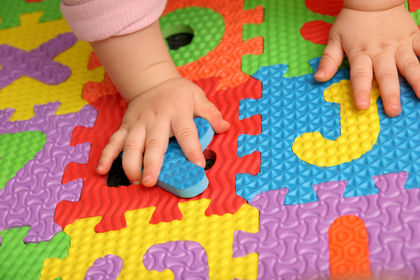GROSS AND FINE MOTOR SKILLS
As teachers, we need to really know how to help our students which the only way to help them is having a idea of what things students are doing acotding to their age.
Gross Motor Skill
Gross motor skill are a certain of movements that children can do with their hands, arms, legs, or feet, or their entire body (an action that involves a baby using muscles). For example, Some of the movements that
are considered gross motor are "running, walking, skipping, climbing, crawling,
rolling over and dancing to name just a few".
Fine motor skills are
movements of the small muscles (use the small muscles of the fingers, toes,
wrists, lips, and tongue), for example, when a baby picks things up or lips and
uses his tongue to taste and feels objects. Fine motor are “writing, pointing,
grasping, holding and reaching.”
As teachers, we need to be pacient because some children are not be able to develop their fine motor skill, by the reason that they have not someone who can help them to do their homework or to do extra activities in order to manipulate things easy.
for example, holding a spoon

During the Early
Childhood
GROSSOR MOTOR SKILLS
|
|
Children
are able to:
ü Walks backwards, toe to heel.
ü Walks unassisted up and down stairs, alternating
feet.
ü May learn to turn somersaults (should be taught the
right way in order to avoid injury).
ü Can touch toes without flexing knees.
ü Learns to skip using alternative feet.
ü Catches a ball thrown from 1 m (3.3 ft)
away.
ü Rides a tricycle or wheeled toy with speed and skillful steering; some children
learning to ride bicycles, usually with training wheels.
ü Jumps or hops forward ten times in a row without
falling.
|
Children
are able to:
ü Balances on either foot with good control for
ten seconds.
ü Builds three-dimensional structures with small cubes
by copying from a picture or model.
ü Demonstrates fair control of pencil or marker; may
begin to color within the lines.
ü Cuts on the line with scissors (not perfectly).
ü Hand dominance is fairly well established
ü Can use spoon and drink from a cup
ü Can copy a circle…etc
|
During the middle
childhood
GROSSOR MOTOR SKILLS
|
|
Children
are able to:
ü Enjoys
vigorous running, jumping, climbing, and throwing etc.
ü Span of
attention increases; works at tasks for longer periods of time, though
ü
ü Has fun
with problem solving and sorting activities like stacking, puzzles and mazes
ü Recognizes
some words by sight; attempts to sound out words
ü
|
Children are
able to:
ü
ü
ü Able to trace
objects.
ü
ü
ü In some cases
the child may be reading well.
ü
|

REFERENCES;

Hello, Gloria.
ResponderEliminarI know that at the stage of toodler children start developing the gross motor, But I would like to know at what specific age can parent be worried if the gross motor is not developing in a normal way!
Thanks,
Regards,